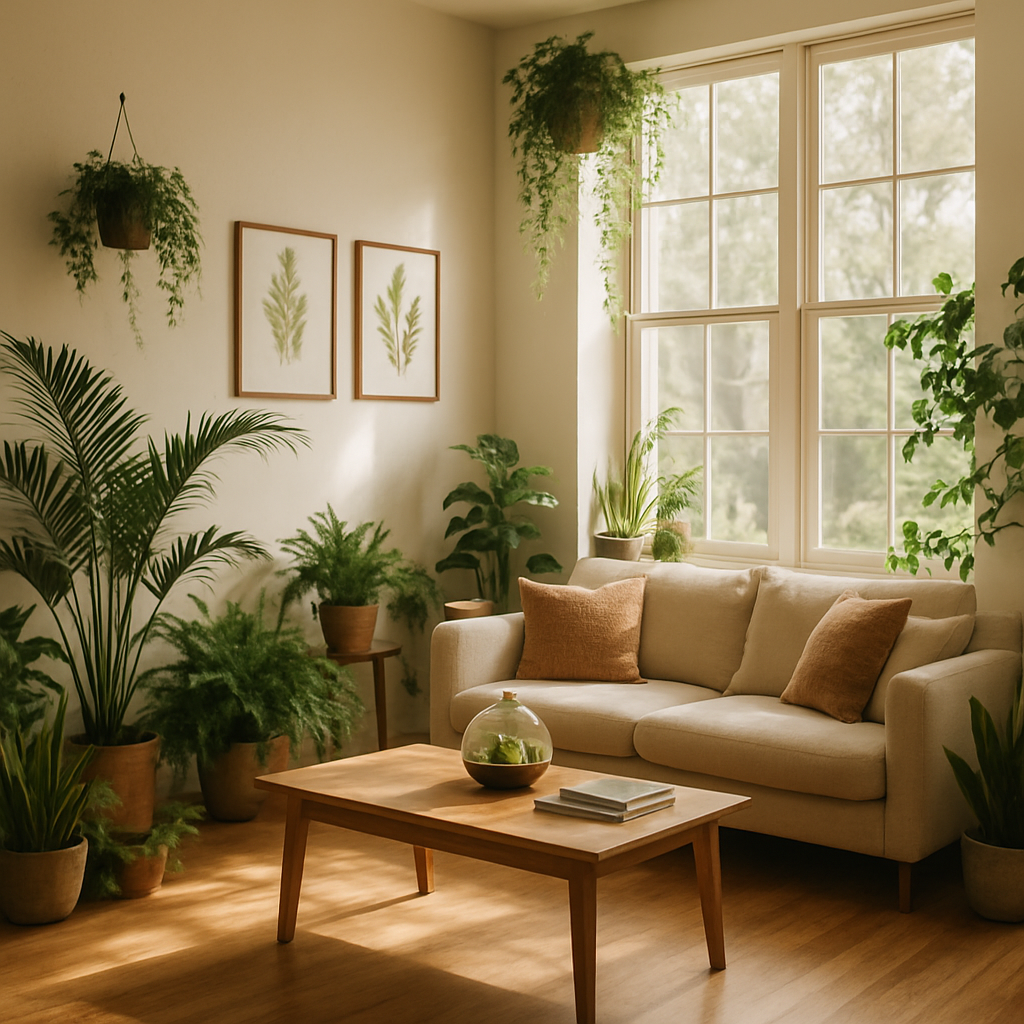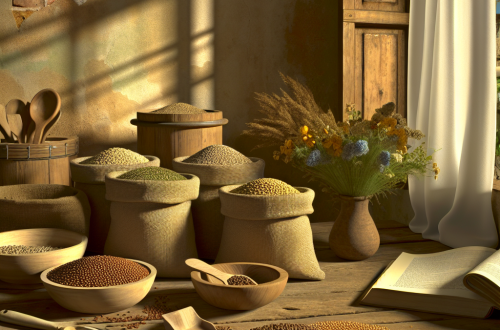Bringing Nature Indoors How Biophilic Design Can Transform Your Space

The connection between humans and nature runs deep. It’s more than just aesthetic preference we’re biologically wired to respond positively to natural environments. This relationship forms the foundation of biophilic design, an approach that brings elements of nature into our indoor spaces to improve wellbeing, productivity, and overall quality of life.
As urban living becomes increasingly disconnected from natural settings, many of us spend upwards of 90% of our time indoors. This separation has measurable negative impacts on our mental and physical health. Biophilic design offers a solution by reimagining our indoor environments to satisfy our innate need for natural connection.
Biophilic design isn’t just about adding a few houseplants (though that’s certainly part of it). It’s a comprehensive approach that incorporates natural materials, patterns, light, and space to create environments that feel alive and connected to the outdoors. The good news? You don’t need a massive budget or a complete renovation to bring these principles into your home.
The Science Behind Biophilic Design
Our bodies respond to nature in measurable ways. Studies show that exposure to natural elements reduces stress hormones, lowers blood pressure, improves concentration, and boosts mood. One famous study by Roger Ulrich found that hospital patients with views of nature recovered faster and needed less pain medication than those facing brick walls.
I remember visiting a friend who works in a modern office building with floor-to-ceiling windows overlooking a wooded area. She mentioned that on days when she sits near those windows, she feels less stressed and more focused. “I used to think it was just because I liked the view,” she told me, “but now I realize my body actually functions differently when I can see trees and sky throughout the day.”
The benefits go beyond just having a nice view. Research from the University of Exeter found that employees in workspaces with natural elements showed 15% higher productivity compared to those in bare, minimal environments. Meanwhile, studies at the Human Spaces global research project linked biophilic workplaces to 15% higher wellbeing scores and 6% higher productivity.
These biological responses make perfect sense from an evolutionary perspective. We spent most of our history as a species in natural environments, and our bodies and minds developed in response to those settings. Modern indoor living is actually quite new for humans, and our biology hasn’t caught up.
Practical Ways to Incorporate Biophilic Design
You don’t need to build a living wall or install a waterfall to bring biophilic design into your space (though both would be amazing). Here are practical approaches that work for any budget:
Live Plants
The most obvious starting point is adding living plants. They improve air quality, add visual interest, and literally bring life into a space. If you’re worried about your plant-keeping abilities, start with nearly indestructible varieties like snake plants, ZZ plants, or pothos.
Last year, I killed three fiddle leaf figs in a row before accepting that I needed something more forgiving. I switched to pothos plants and now have them trailing from shelves and bookcases throughout my apartment. They thrive despite my occasionally neglectful watering schedule, and the trailing vines create movement and life in previously static corners.
For maximum impact, vary the sizes, shapes, and heights of your plants. Mix floor plants, tabletop varieties, and hanging or climbing specimens. Group plants together to create mini ecosystems that have more visual impact than isolated specimens.
Natural Materials
Replace synthetic materials with natural alternatives where possible. Wood, stone, clay, wool, cotton, and rattan all bring organic textures and a connection to nature.
This doesn’t mean replacing all your furniture. Small swaps make a difference: a wooden bowl instead of plastic, clay planters instead of resin ones, a wool throw blanket, or jute rug. The tactile experience of natural materials provides subtle but important sensory connections to the natural world.
My apartment came with the world’s ugliest laminate countertops. I couldn’t afford to replace them, so I found a large wooden cutting board at a secondhand shop and leave it out permanently. That small patch of real wood completely transforms how the kitchen feels and gives me a natural surface for food prep and casual dining.
Natural Light
Maximize natural light in your space. Remove heavy window coverings or replace them with sheer options that filter rather than block light. Place mirrors strategically to bounce daylight deeper into rooms. If privacy is a concern, window films can provide coverage while still allowing light through.
Pay attention to your artificial lighting too. Opt for full-spectrum bulbs that mimic natural light rather than harsh fluorescents. Layer your lighting with a mix of ambient, task, and accent fixtures to create the kind of varied light environment found in nature.
Views and Visual Connections
If you’re lucky enough to have views of nature, maximize them by arranging furniture to face windows. No natural views? Create them with botanical art, nature photography, or even digital screens displaying natural scenes.
Research shows that even images of nature provide some of the same psychological benefits as actual nature. A study in the Journal of Environmental Psychology found that looking at photographs of natural scenes for just 40 seconds improved concentration and reduced mental fatigue.
Natural Patterns and Forms
Nature rarely creates perfect straight lines or exact replicas. Incorporate organic patterns and forms through textiles, artwork, or decorative objects. Look for designs featuring botanical motifs, flowing water patterns, or fractals (self-repeating patterns common in nature).
These biomorphic forms and patterns trigger the same positive responses as actual nature. They add visual complexity and interest while maintaining a sense of order exactly what we find most appealing in natural landscapes.
Water Elements
Water features add movement, sound, and reflective qualities that deeply resonate with our biology. Small tabletop fountains, desktop humidifiers that produce visible mist, or even a simple bowl of water with floating flowers can introduce this element.
If actual water isn’t practical, consider representations of water through blue colors, wavy patterns, or reflective surfaces like glass and mirrors that mimic water’s light-catching properties.
Sensory Variability
Nature constantly changes light shifts, temperatures fluctuate, sounds vary. Create similar non-static conditions in your home with adjustable lighting, natural ventilation, and varied textures.
I’ve set up my workspace near a window where I can feel subtle air movements and temperature changes throughout the day. The light quality changes dramatically from morning to afternoon, and I’ve found this natural variability keeps me more alert and engaged than the perfectly controlled environment at my old office.
Refuge and Prospect
We’re drawn to spaces that offer both shelter (refuge) and views (prospect) think of how appealing it is to sit in a protected alcove while looking out over a landscape. Create this in your home with cozy nooks that offer broader views of the room or outside.
A friend created the perfect refuge space by placing a comfortable chair in a corner with a small side table and lamp, positioned to look across the room toward a large window. It immediately became everyone’s favorite spot when visiting her apartment.
Small Space Solutions
Living in a tiny apartment doesn’t mean you can’t embrace biophilic design. In fact, limited space makes the quality of that space even more important.
For extremely small spaces, focus on the vertical dimension. Wall-mounted planters, hanging plants, and tall, slender floor plants maximize greenery without sacrificing floor space. A tension rod between walls can support hanging plants even if you can’t drill into ceilings.
Use plants as room dividers to create zones while maintaining airflow and light penetration. A row of plants on a shelf or console table can define spaces without the heaviness of a solid divider.
If floor and surface space is limited, look up literally. The ceiling is often underutilized real estate. Consider hanging plants or installing a simple wooden trellis that allows climbing plants to grow across the ceiling.
Window sills become prime real estate in small spaces. Choose plants that thrive in your specific light conditions and create a mini garden that doesn’t take up valuable floor or counter space.
Bringing nature indoors transforms spaces in ways that go beyond aesthetics. The practice connects us to something fundamental and necessary for our wellbeing. Whether you add a single plant or redesign your entire space around biophilic principles, you’re tapping into a powerful tool for creating spaces that feel good to be in.
The beauty of biophilic design lies in its flexibility and scalability. Start with what’s accessible to you now perhaps a plant on your desk or a natural material throw pillow and build from there. Your body and mind will respond to even these small connections with the natural world, creating a home that supports your wellbeing in subtle but meaningful ways.


